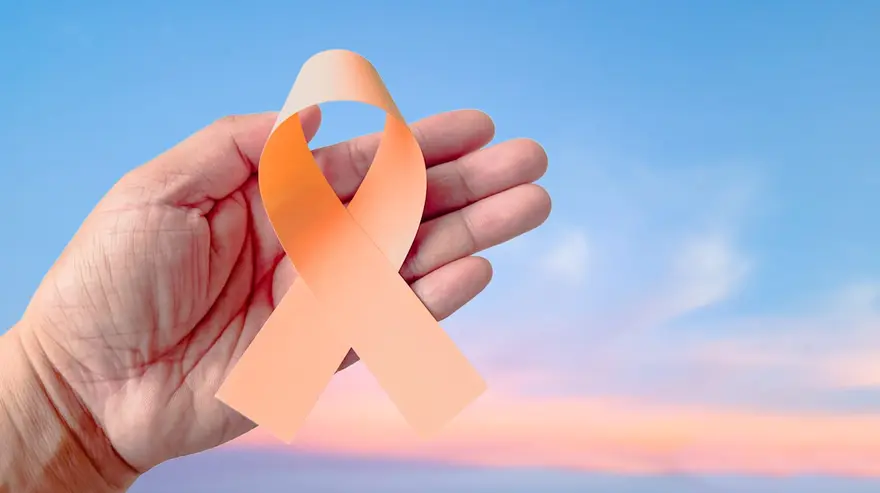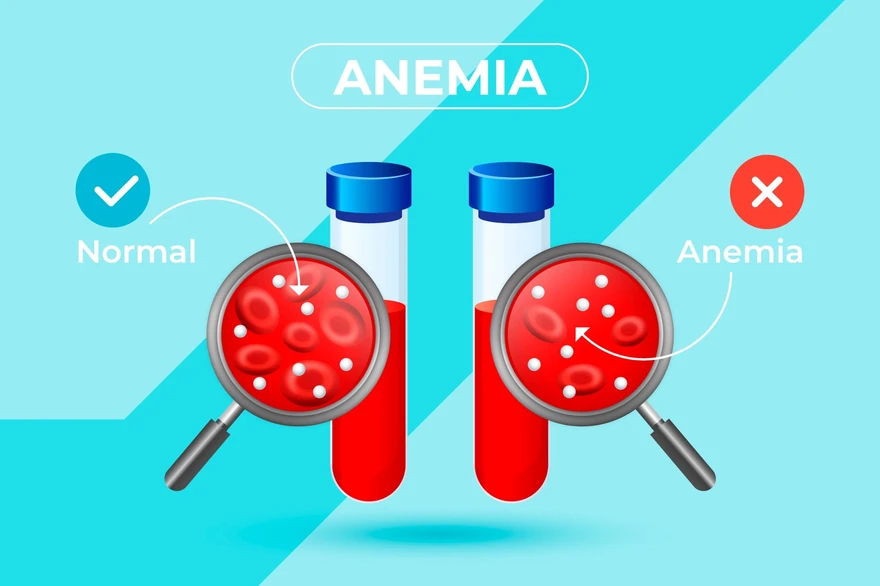Preventive Healthcare
Understanding Echo Tests: Echocardiogram Insights
3768 Views
0

During an echocardiogram, a small handheld device called a transducer is placed on the chest or abdomen. The transducer emits high-frequency sound waves, and as these waves bounce off the heart structures, they create echoes. The echoes are then converted into real-time images of the heart, which can be viewed on a monitor.
What is an echocardiogram?
An echocardiogram, also known as an echo, is a non-invasive test that uses ultrasound waves to create images of the heart's structure and function. It is a painless and safe test commonly used to diagnose and monitor various heart conditions. It is a type of ultrasound imaging that provides information about the size, shape, and function of the heart chambers and valves.
An echocardiogram is performed using a small device called a transducer. The transducer is placed on the chest and emits high-frequency sound waves. The sound waves travel through the chest and bounce off the heart. The transducer then records the echoes of the sound waves and converts them into images.
Who performs an echo test?
Echo tests are performed by trained healthcare professionals called cardiac sonographers, also known as echocardiographers. They are specially trained to use ultrasound imaging technology to produce images of the heart and its structures. Cardiac sonographers work in various settings, including hospitals, clinics, and private practices.
What are the different types of echocardiograms?
There are two main types of echocardiograms:
Transthoracic echocardiogram (TTE)
A TTE is the most common type of echocardiogram. It is performed by placing a transducer on the chest. The transducer emits sound waves that travel through the chest and bounce off the heart.
Transesophageal echocardiogram (TEE)
A TEE is a more invasive type of echocardiogram performed by inserting a transducer into the oesophagus. The oesophagus is the tube that connects the mouth to the stomach.
What techniques are used in echocardiography?
Echocardiography uses various techniques to create images of the heart and its structures. The most common techniques include:
- M-mode echocardiography: This technique creates a one-dimensional image of the heart's movement over time. It is used to measure the thickness and movement of the heart walls and the size and function of the heart valves.
- Two-dimensional (2D) echocardiography creates real-time heart images from different angles. It is used to assess the size, shape, and function of the heart and its chambers, as well as the movement of the heart valves.
- Doppler echocardiography: This technique uses the Doppler effect to measure blood flow velocity through the heart and its chambers. It is used to identify areas of narrowing or blockage in the heart valves and assess the heart's pumping function.
- Colour Doppler echocardiography: This technique combines Doppler echocardiography with colour to create images that show the direction and velocity of blood flow through the heart. It is used to identify areas of regurgitation (leaking blood) and stenosis (narrowing) in the heart valves and assess the heart's pumping function.
Other techniques that may be used in echocardiography include:
- Tissue Doppler imaging measures the velocity of the heart muscle tissue.
- Strain imaging is used to assess the heart muscle's function and identify areas of damage.
- Contrast echocardiography is used to diagnose various heart conditions.
How long does an echocardiogram take?
An echocardiogram typically takes 30-60 minutes to complete, but the actual time may vary depending on the type of echocardiogram being performed and the complexity of the patient's condition.
What is an echocardiogram vs. an EKG?
|
Echocardiogram |
EKG (Electrocardiogram) |
|
Measures the heart's structure and function |
Measures the heart's electrical activity |
|
Uses ultrasound waves |
Uses electrodes placed on the chest, arms, and legs |
|
Non-invasive |
Non-invasive |
|
It can be used to diagnose a wide range of heart conditions |
It can be used to diagnose heart rhythm problems, such as arrhythmia and heart attack |
When would I need an echocardiogram?
You may need an echocardiogram if you have any of the following:
- Symptoms of heart disease, such as chest pain, shortness of breath, or lightheadedness
- A history of heart disease, such as coronary artery disease, heart valve disease, or cardiomyopathy
- High-risk factors for heart disease, such as high blood pressure, high cholesterol, diabetes, or smoking
- A family history of heart disease
- A congenital heart defect (a heart defect that you were born with)
- If you have shortness of breath
You may also need an echocardiogram if you are preparing for certain surgeries or procedures, such as heart valve surgery or heart bypass surgery.
What does an echocardiogram show?
An echocardiogram can show the following information about the heart:
- Size and shape: show whether the heart is enlarged, reduced in size, or has an unusual shape.
- Wall thickness: show whether the heart walls are thickened, thinned, or normal.
- Valves: show how well the heart valves are opening and closing and whether there is any regurgitation (leakage) or stenosis (narrowing).
- Pumping function: shows how well the heart is pumping blood.
- Abnormalities: show any other abnormalities in the heart, such as blood clots, tumours, or infections.
How is a transthoracic echocardiogram done?
A transthoracic echocardiogram (TTE) is a non-invasive echo test that uses ultrasound waves to create heart images. It is the most common type of echocardiogram and is performed by placing a transducer on the chest. TTE is a safe and well-tolerated test.
There is a very small risk of bleeding or infection from the transducer, but this is rare. A trained sonographer performs the echocardiogram test using a transducer handheld device.
Preparing for a transthoracic echo
There is no special preparation required for a TTE. You may be asked to remove your jewellery and clothing from the waist up. You may also be asked to drink plenty of fluids before the test to help fill your bladder. A full bladder can help to improve the images of the heart.
What to expect during a transthoracic echo
Here is what to expect during a transthoracic echo (TTE), a type of echocardiogram:
Before the test
- You will be asked to remove any jewellery or clothing that may interfere with the test, such as a necklace or bra.
- You may be asked to drink plenty of fluids before the test to help fill your bladder. A full bladder can help to improve the images of the heart.
- You will be asked to lie on your back on a table.
- The technician will place a transducer on your chest. The transducer is a small, handheld device that emits ultrasound waves.
- The technician will move the transducer around your chest to obtain heart images.
During the test
- You may feel pressure from the transducer on your chest, but the test is not painful.
- The test typically takes about 30 minutes.
- You may be asked to hold your breath briefly to improve the image quality.
After the test
- You can resume your normal activities immediately after the test.
- The technician will review the images with the doctor to provide a diagnosis or treatment recommendations.
How is a transesophageal echocardiogram done?
A transesophageal echocardiogram (TEE) is a medical test that uses sound waves to produce detailed images of the heart and the surrounding blood vessels. Unlike a traditional echocardiogram, performed outside the chest, a TEE involves passing a specialised ultrasound probe through the oesophagus (the tube connecting the throat to the stomach) to get closer and more detailed images of the heart.
The transducer is inserted through the patient's nose or mouth and is guided down the oesophagus to the back of the heart. This allows the transducer to be closer to the heart, which can produce clearer images. Your doctor may perform a TEE along with Doppler and colour Doppler imaging to see how fast and in which direction blood flows through your heart.
Preparing for an exercise stress echo
To prepare for an exercise stress echo, you should:
- Avoid caffeine for 24 hours before the echocardiogram test. Caffeine can interfere with the results of the test.
- Avoid eating a large meal for 3-4 hours before the echocardiogram test. A full stomach can make it uncomfortable to exercise.
- Wear comfortable clothing and shoes that you can walk or run in.
- Take any medications that your doctor has prescribed for you unless they tell you not to.
- If you have any questions or concerns, talk to your doctor before the echocardiogram test.
What to expect during an exercise stress echo
Before the test
- You will be asked to change into a gown and remove any jewellery or clothing that may interfere with the test.
- You will be connected to an electrocardiogram (EKG) monitor to track your heart rate and rhythm throughout the test.
- A blood pressure cuff will be placed on your arm to monitor your blood pressure.
- A transducer (a small, handheld device that emits ultrasound waves) will be placed on your chest.
- You will be asked to warm up by walking or running slowly for a few minutes.
During the test
- You will begin walking, running on a treadmill, or riding a stationary bike.
- The technician will gradually increase the speed and incline of the treadmill or bike to increase the intensity of the exercise.
- You will continue to exercise until you reach your target heart rate or until you experience symptoms such as chest pain, shortness of breath, or dizziness.
- The technician will monitor your heart rate, blood pressure, and rhythm throughout the test. They will also take images of your heart using ultrasound.
After the test
- You will be able to rest and cool down.
- The technician will remove the EKG monitor, blood pressure cuff, and transducer.
- The technician will review the images of your heart and discuss the results with you.
How do I get the results of my echo test?
Here are some tips for getting the results of your echo test:
- Schedule a follow-up appointment with your doctor as soon as possible after the test.
- Ask your doctor how long it will take to get the results of your echo test.
- If you do not receive a copy of the echo test report, ask your doctor for one.
- During your follow-up appointment, ask your doctor any questions about the echo test results and what they mean for you.
What should you not do before an echocardiogram?
Here are some things you should not do before an echocardiogram:
- Eat or drink anything except water for at least four hours before the test. A full stomach can make obtaining clear images of the heart difficult.
- Smoke or use any nicotine products on the day of the test. Nicotine can constrict the blood vessels, making it difficult to see the heart.
- Drink coffee or anything with caffeine for 24 hours before the test. Caffeine can increase your heart rate and make it difficult to get accurate readings.
- Take any medications that may affect your heart rate or blood pressure. This includes medications such as beta-blockers, calcium channel blockers, and nitroglycerin.
Conclusion
Get medical assistance immediately if you have symptoms like shortness of breath or chest pain. Metropolis Labs is the company you can trust for all your ECG test needs. Make an appointment with us for an ECG test package today to receive precise and thorough reports quickly. To learn everything there is to know about our ECG tests, browse our directory.













1701259759.webp)









 WhatsApp
WhatsApp